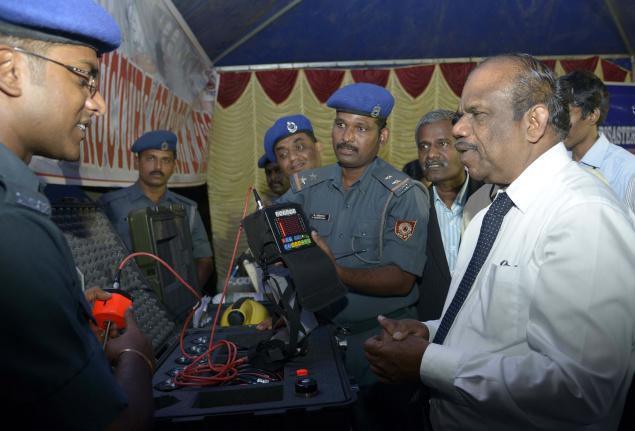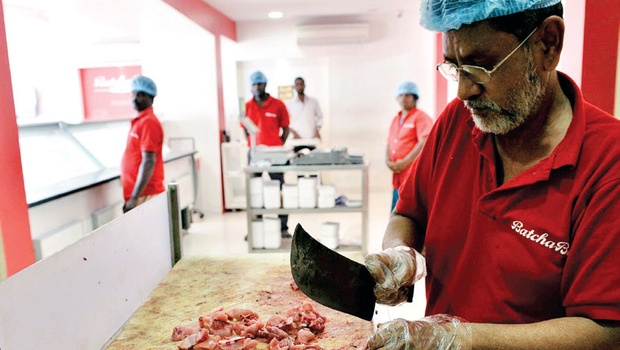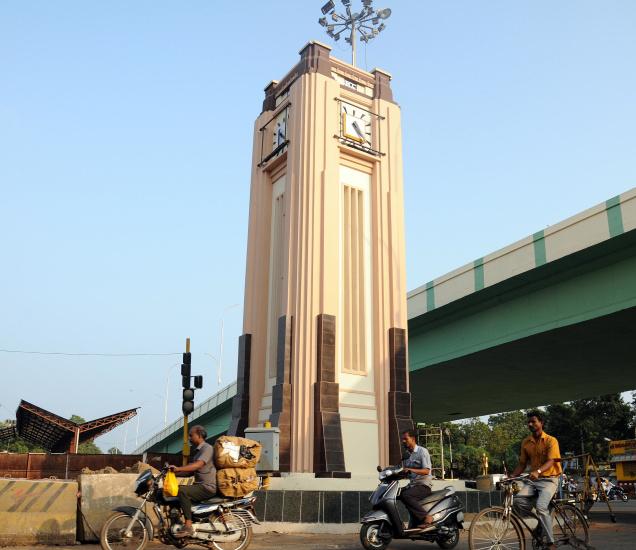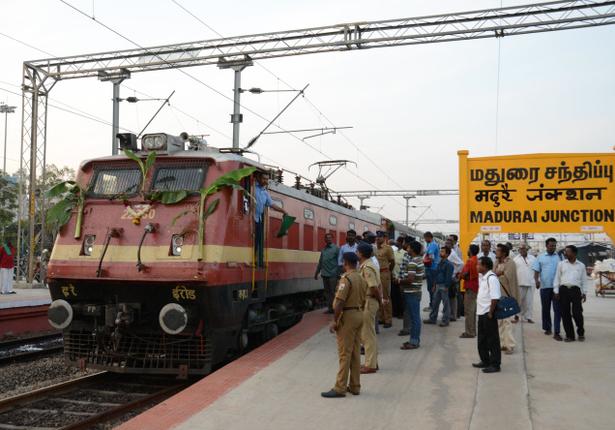
When loco pilot J. Basheer Ahmed pressed a button that sounded the horn of an electric locomotive on Wednesday morning, it marked not only the departure of Vaigai Express from Madurai railway junction, but also announced the arrival of electrified tracks in the Madurai-Dindigul section.
After the Commissioner of Railway Safety cleared the Dindigul-Virudhunagar electrified tracks recently, Madurai railway division officials on Wednesday began the operation of AC locos in Vaigai Express, Pandian Express and one pair of Madurai-Dindigul passenger train.
After a simple puja on the tracks of platform number two at the junction, the Chennai-bound Vaigai Express was hauled by an electric locomotive for the first time from Madurai.
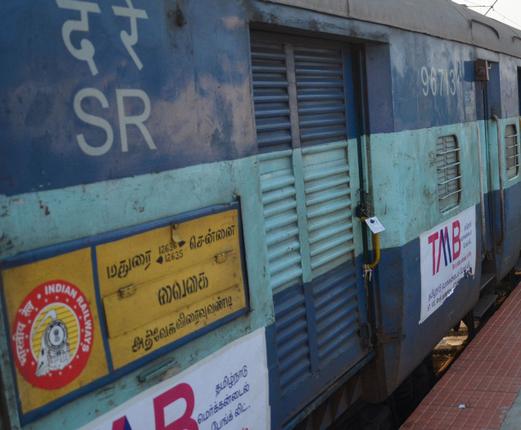
Hitherto, the trains from Chennai were being pulled with electric locomotives either up to Tiruchi or Dindigul.
“The electric locomotive emanates no smoke and produces lower level of noise,” a railway official said after the inaugural function of the electrified tracks.
A senior railway official said besides being pollution-free, the AC locos helped the crew members negotiate looplines easily.
Better visibility
For the crew members, the design of the AC locos would provide better visibility of the tracks.
The electric engines had higher haulage capacity and can also attain high speed quickly. The running time of Pandian and Vaigai express trains would be reduced by around 20 minutes as changing of diesel and AC locomotives was not required in Tiruchi or Dindigul.
Earlier, the in-coming Pandian Express was also hauled with an electric engine up to Madurai junction. Very soon, a total of eight express and passenger trains would use electric locomotives between Chennai and Madurai, another railway official said.
Senior Divisional Electrical Engineer G. Sugind and Divisional Operations Manager (General) A. Rajakumar, and Madurai Station Manager C. Solomon Sevathiah were among those present.
source: http://www.thehindu.com / The Hindu / Home> News> Cities> Madurai / by S Sundar / Madurai – February 12th, 2014
